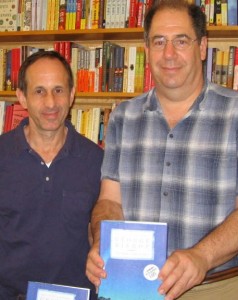I finally made it into the Hindustan Times. (Thanks, Reuters.)
Friday, August 16, 2013
Reuters
The Year That Comet Kohoutek Tore Through Lives
Alan Broussard is 14 in 1973, the year the comet Kohoutek was set to race across the skies in the astronomical sensation of the century – although it ultimately failed to deliver the blazing light show many people expected.
In “The Night of the Comet”, a novel by George Bishop, the comet is personal for Alan, whose geeky science-teacher father becomes so obsessed that it takes over his life as he works to whip their rural Louisiana town into a comet-watching frenzy.
Kohoutek slowly weaves through Alan’s growing sense of his father’s faults and his parents’ crumbling marriage, as well as his own obsession with their beautiful neighbour Gabriella, until one final, shocking event.
Bishop, a Louisiana native who has spent most of his adult life overseas, spoke with Reuters about writing and comets.
What got this book going?
The idea of comet Kohoutek got stuck in my mind years ago and I thought it would be a good backdrop for a story. Then the image of a telescope and a man in an overcoat leaping off a roof. I’ve had that in my mind for a story for decades. So I put the two together and came up with this.
What was it about the comet that attracted you?
I barely remembered the comet from my own childhood but I remembered all the excitement that built up to it. It was like the “Wannabe Comet” – the big dud of the decade. I thought it had dramatic potential, it elicited my sympathy. There was such a big buildup.
Then when I began researching it, it was even more than I remembered. People were crazy about this comet at the time, more than any comet in the era – since Halley’s. NASA was all over it. There were all kinds of experiments launched around the comet. There were songs written about it. It was huge.
Where did you go from the images?
I began with researching Kohoutek and looking through old newspaper articles, kind of building the story around that. My idea was to use the trajectory of the comet as the arc of the story, which seemed really simple when I started out to do it. But then when I began writing it and researching comets more and more, I found out that I had to know a lot more about comets to make it scientifically accurate. I had a very vague idea of the comet comes, it gets bigger, it fades away. That was all I’d thought about it. But to write it, you have to get all the science right. I was researching moon phases, consulting with astronomers.
The family story began a lot bigger, with the boy narrator grown up and going back to the town. He’s kind of a jerk after he’s grown up, he’s just divorced from his wife and he’s not getting along with his son. I originally imagined a multi-generational thing … I worked on that for quite a while – it was really getting out of hand. It was sprawling … I focused on the story in the ’70s. The only frame that’s left is that very narrow frame in the beginning and the end.
What were some of the other things that were tough?
It was hard for me to find the right tone between humour and profundity, and realism. I wanted to also bring in a fantastical element too, with the comet. My default is kind of jokey but I was trying to reign it back with this one. I like the tone that came out, I think it struck the right tone. But it’s tricky writing about kids and the geeky dad. So much of it lays itself open to stereotypes. The other difficult thing was that I had more ideas than I could fit in the novel.
Were there any tricks you learned with this second book that helped you work?
I learned the habit of writing every day, I learned to go about it as a job. I still do that. I set my alarm clock in the morning and I make coffee and I go to it. It took me a while to settle into that routine and see that this is what it takes … I learned the habit of writing full-time, which is exhausting and not very pleasant. But I’ve learned how to do it and I see it as my job now.
Why are you writing about teens in Louisiana in the ’70s?
I don’t know, maybe they’re the coming of age books I should have been writing 30 years ago and am just getting around to them now.
http://www.hindustantimes.com/StoryPage/Print/1108528.aspx
© Copyright © 2013 HT Media Limited. All Rights Reserved.

